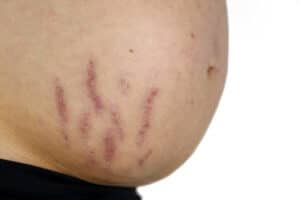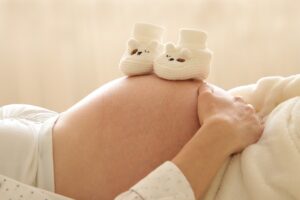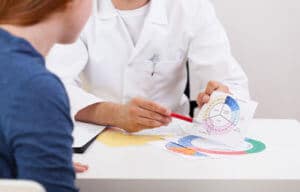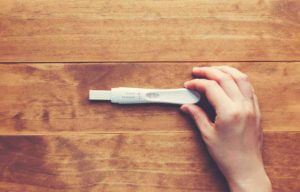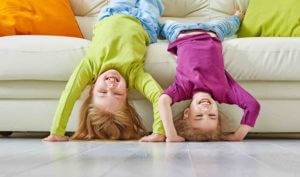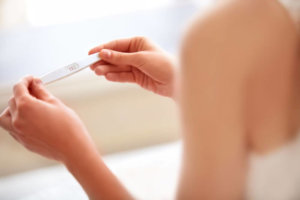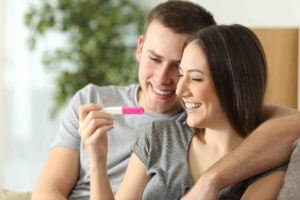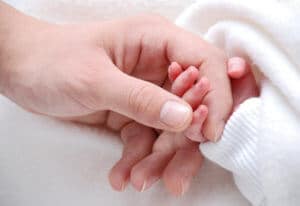The first hours after birth.
Table of contents
What Happens In The Delivery Room After The Birth?
How overwhelming the moment is for the new mother when she can finally receive her baby. While still in the delivery room, they are allowed to make their first contacts. From the first breastfeeding to the health check – for the newborn, there are also other points on the program in the delivery room.
After the baby leaves its mother’s warm, protective body, it first has to get used to the conditions outside the womb. After all, it is suddenly confronted with gravity, light, cold, hunger and thirst. Its blood circulation must change in seconds and function independently so that it can take its first breath of air. In order for the alveoli to develop properly, a few strong breaths are necessary.
An Intimate Connection
Before or immediately after weaning, the midwife places the baby on the mother’s chest. Covered with a previously warmed cloth, the baby feels comfortable and secure here, can hear its mother’s familiar heartbeat and feel her warmth. Now the two meet for the first time! For the parents, this is an overwhelming experience, and the woman has quickly forgotten the efforts and pain of childbirth. Together, mother and child can rest and process the birth experience. This so-called bonding, which can be translated as “making contact with the parents,” marks the beginning of the intimate parent-child relationship.
The Weaning
As soon as the umbilical cord between mother and child has pulsated out, it is clamped and cut with a sterile umbilical clamp. If he likes, the father may take the scissors into his own hands for this. When the cord is cut, the midwife takes a few drops of blood from the cord and measures its PH. It provides information about how well the child was supplied with oxygen shortly before birth. If she determines from this that there was an undersupply of oxygen before and during birth, the child may need to be given special medication to compensate for the deficit.
The Health Check
Shortly after birth, the doctor or midwife checks the baby’s general health with a trained eye: the so-called APGAR test, named after its inventor Virginia Apgar (1952). Three times in total – at the first, fifth and tenth minutes of life – they assign points for the infant’s breathing, heartbeat, muscle and movement functions, reflexes and skin color. For each of these factors, the infant receives 0, 1 or 2 points. The scores are then added together and recorded in the yellow screening examination booklet. A score of 7 or more after one minute and 9 or 10 after five and ten minutes indicate that the baby is doing well.
After getting to know the young family for the first time, the midwife takes another close look at the child. In the first screening examination, known as U1, she checks whether facial features and body proportions are normal, checks the cranial sutures on the head, palpates the chest, abdomen and spine, counts fingers and toes, and looks at the sexual organs and the anus. She measures the circumference of the skull, tests the grasping reflexes and counts the blood vessels on the umbilical cord. Now the baby also gets its name tag put around one wrist so it can’t be confused. He is then measured, weighed and his umbilical cord is shortened to the appropriate length. The midwife enters the size and weight in the baby passport. The father is allowed to help with bathing and dressing – a good opportunity for them to get to know each other. Once mother and baby are well taken care of, they stay in the delivery room for another hour or two for observation. In most hospitals, the new parents are left undisturbed so that they can enjoy the new situation as a family.
The First Drops
Most newborns can be put to the breast in the first few hours. The midwife already shows the woman in the delivery room how it lies correctly and can drink best. For the mother’s breast, this is the best stimulus to get milk production going. The first drops of “colostrum” that the baby receives have a very special composition: the so-called colostrum contains more water, vitamins and minerals, but much less fat than the following breast milk. In addition, various proteins are dissolved in it, the immunoglobins. These maternal defense substances effectively protect the baby from diseases in the first few days; its own immune system has yet to develop.
Rooming-In
In many hospitals, mother and baby live together in the same room day and night: this is known as rooming-in. It is also possible for the newborn to stay with its mother only during the day and come to the infant ward at night so that the woman can sleep through the night. Rooming-in allows the two of them to get to know each other in peace and quiet, thus building a strong bond early on. Under the guidance of the nurses, the mother learns everything she needs to know about caring for her charge. Breastfeeding often works better when the two spend a lot of time together at the beginning.

